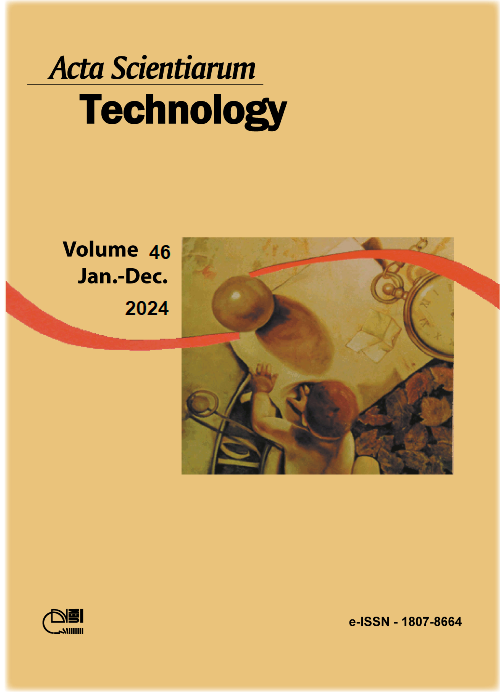Comparison between CFD simulation and affinity laws and analysis of the degree of reaction.
DOI:
https://doi.org/10.4025/actascitechnol.v46i1.64413Keywords:
centrifugal pump impeller; numerical simulation; variable rotation; pressure.Abstract
Computational Fluid Dynamics (CFD) is a modern technology used to study fluid flow. Experimental methods for predicting the turbomachinery performance involve greater time consumption and financial resources compared to the CFD approach. For the centrifugal pump the impeller is the main component, as it transfers energy to the fluid. The pump flow rate and the total head are directly associated with the impeller rotation speed. The purpose of this paper is to present the analysis and comparison of numerical simulation results using Computational Fluid Dynamics of a centrifugal pump impeller under three different rotation speeds: 3500 rpm (nominal), 3100 rpm and 2700 rpm. The software used was ANSYS-CFX®, the turbulence model adopted was the Shear Stress Transport (SST). Eight operating points were simulated for each rotation. The simulation provided the characteristic curves, pressure distribution, and total and static pressure at the inlet and the outlet of the impeller. The degree of reaction was calculated. The results were compared by application of affinity laws, and showed agreement with them. The results also showed that the degree of reaction increased with increasing flow rate, and it was coherent with the backward curved blade impeller. The simulations show that the energy portions that make up the total energy transferred by the impeller agree with the affinity laws.
Downloads
Downloads
Published
How to Cite
Issue
Section
License
DECLARATION OF ORIGINALITY AND COPYRIGHTS
I Declare that current article is original and has not been submitted for publication, in part or in whole, to any other national or international journal.
The copyrights belong exclusively to the authors. Published content is licensed under Creative Commons Attribution 4.0 (CC BY 4.0) guidelines, which allows sharing (copy and distribution of the material in any medium or format) and adaptation (remix, transform, and build upon the material) for any purpose, even commercially, under the terms of attribution.
Read this link for further information on how to use CC BY 4.0 properly.











8.png)




